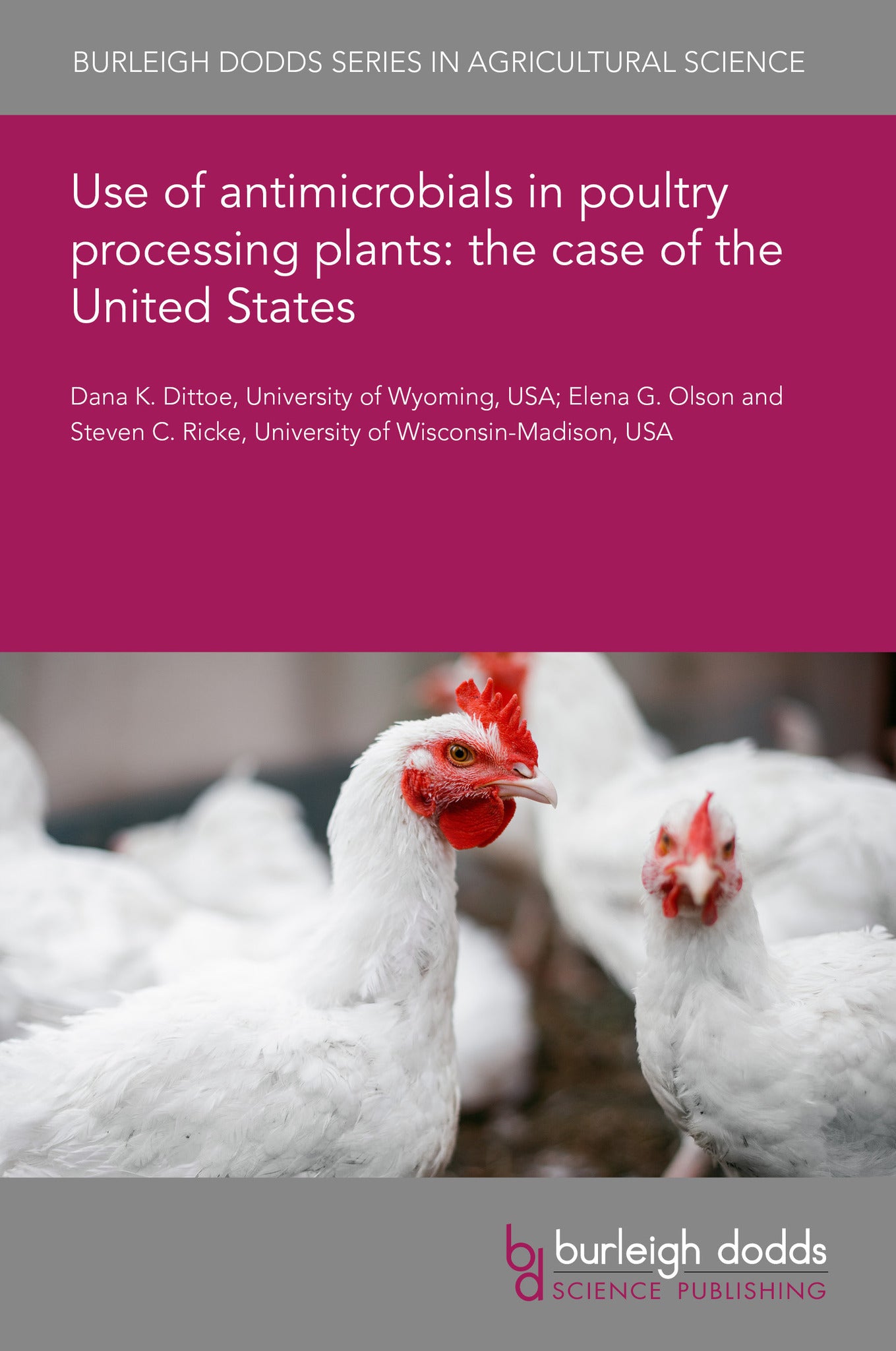We're sorry. An error has occurred
Please cancel or retry.
Use of antimicrobials in poultry processing plants: the case of the United States

Some error occured while loading the Quick View. Please close the Quick View and try reloading the page.
Couldn't load pickup availability
- Format:
-
09 April 2025

Poultry is one of the most consumed meats in the United States, and processors strive to provide consumers with safe and wholesome products. Consequently, poultry processors are challenged to reduce the abundance of pathogens such as Salmonella and Campylobacter jejuni in raw poultry products. Despite implementing numerous control measures throughout the processing stages, Salmonella and C. jejuni persist in raw poultry. This review aims to explore various antimicrobials, including organic and inorganic acids, used as short-duration dips and sprays to reduce common pathogens (Salmonella, Campylobacter jejuni, and Escherichia coli) on raw chicken whole carcasses and meat portions.

TECHNOLOGY & ENGINEERING / Agriculture / Animal Husbandry, Poultry farming, TECHNOLOGY & ENGINEERING / Agriculture / Sustainable Agriculture, Sustainable agriculture

- 1 Introduction
- 2 Foodborne pathogens in poultry processing
- 3 Poultry processing operations in the United States
- 4 Antimicrobials used in processing: general issues
- 5 Individual antimicrobials: peroxyacetic acid (PAA)
- 6 Individual antimicrobials: sodium bisulfate salt (SBS)
- 7 Individual antimicrobials: acidified sodium chlorite (ASC) and organic acid blends
- 8 Factors affecting antimicrobial efficacy and multiple hurdle approaches to optimizing their use
- 9 Conclusion and future trends
- 10 Acknowledgements
- 11 Where to look for further information
- 12 References



